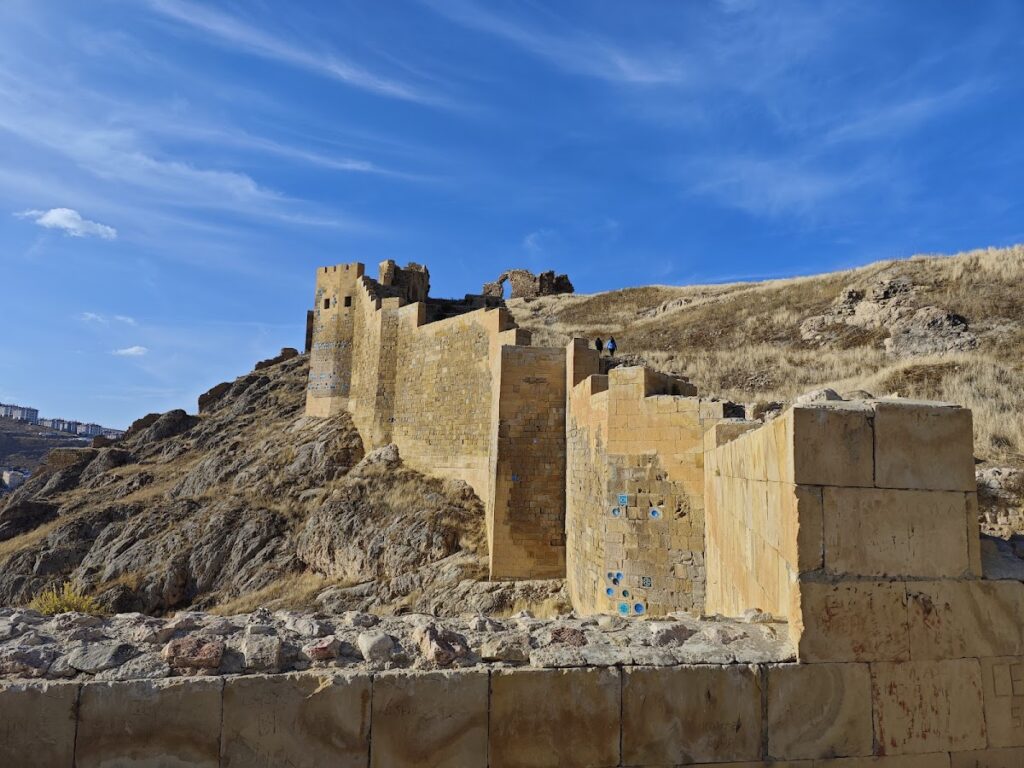Bayburt Castle: A Historic Fortress in Turkey
Visitor Information
Google Rating: 4.3
Popularity: Low
Google Maps: View on Google Maps
Country: Turkey
Civilization: Unclassified
Remains: Military
History
Bayburt Castle is located in the municipality of Halfikale (Kaleardı) in Bayburt, Turkey. Although the exact origins and original builders of the fortress remain unclear, the site is believed to have existed well before the Common Era. It appears in historical records during the reign of the Bagratid dynasty between 885 and 1044, indicating its long-standing strategic importance.
During late antiquity, the castle was part of Byzantine holdings and is noted to have been strengthened under Emperor Justinian I in the 6th century. Control later shifted to Armenian rulers before the arrival of Turkic forces in the mid-11th century. Bayburt Castle became one of the earliest Anatolian strongholds captured by the Turks around 1054–1055, subsequently governed by various Turkish dynasties including the Great Seljuks, the Saltukids, and the Danishmendids.
Significant fortifications were undertaken in the early 12th century under Sultan Tughril II and his governor in Erzurum, enhancing defenses against threats from the Empire of Trebizond. The fortress later came under the Akkoyunlu confederation before being incorporated into the Ottoman realm in 1514 following a notable siege of Bayburt. The Ottomans recognized the castle’s strategic value on the key transit route between Trabzon and Iran, as evidenced by a 1520 record listing nearly 400 guards stationed there along with extensive arms.
The fortress underwent major restoration under Suleiman the Magnificent in 1541 during his military campaign in Iran and received further repairs during the reign of Murad III in the late 16th century. Historical travel accounts from 1647 describe a thriving citadel neighborhood with hundreds of houses and a mosque within the castle walls. Following damage sustained during the Russo-Turkish War of 1828–1829, the site fell into neglect until preservation efforts resumed in the late 20th century. Archaeological investigations and restoration works began anew in 2017, uncovering layers of the castle’s long history. The site is also referenced in the “Kitabi Dədə Qorqud” epic and was called Çinimaçin Castle during the Ottoman period.
Remains
Bayburt Castle occupies a commanding position atop a steep rocky hill about 1,150 meters above sea level, overlooking the upper basin of the Çoruh River. Its defensive layout consists of two concentric walls stretching more than two kilometers in length. These walls rise up to 30 meters high, with a wide 200-meter space separating the inner and outer enclosures. The outer wall adapts to the natural rocky outcrops, integrating directly with the steep terrain to maximize its defense.
The fortifications include numerous bastions spaced along the walls, built in multiple shapes including semicircular, quadrangular, and triangular forms. These bastions, some supported by retaining walls, strengthened vulnerable points and corners. The castle’s two main entrances reflect its defensive nature: the eastern gate known as “Demirkapı” or Iron Gate is reinforced with three layers of iron, while the western gate called “Nöbethane Kapısı” or Watch Station Gate provided connection to the nearby city.
Inside the citadel, historical records and 17th-century traveler Evliya Çelebi’s accounts mention a densely built neighborhood of around 300 houses and a mosque, indicating a significant settled population within the fortress walls at that time. Inscriptions on the walls reveal that architect Ziyâeddin Lü’lü, who served as a palace official and military commander under Sultan Tughril II, was responsible for repairs and constructing bastions during the Seljuk renovation period. Additionally, a stone inscription in Naskh script—an elegant style of Arabic calligraphy—once displayed on the city-facing walls bore the name of Hatice Sultan, Tughril II’s wife, though this inscription was lost after 1936.
East of the main fortress lies the remains of a church dating from between the 14th and 18th centuries, reflecting the diverse religious history of the site. On the western side of the hill, cave structures are also found, adding to the complexity of the castle’s features. Together, these elements testify to the castle’s long use as a military stronghold, settlement, and place of worship, adapting through successive eras and rulers.




